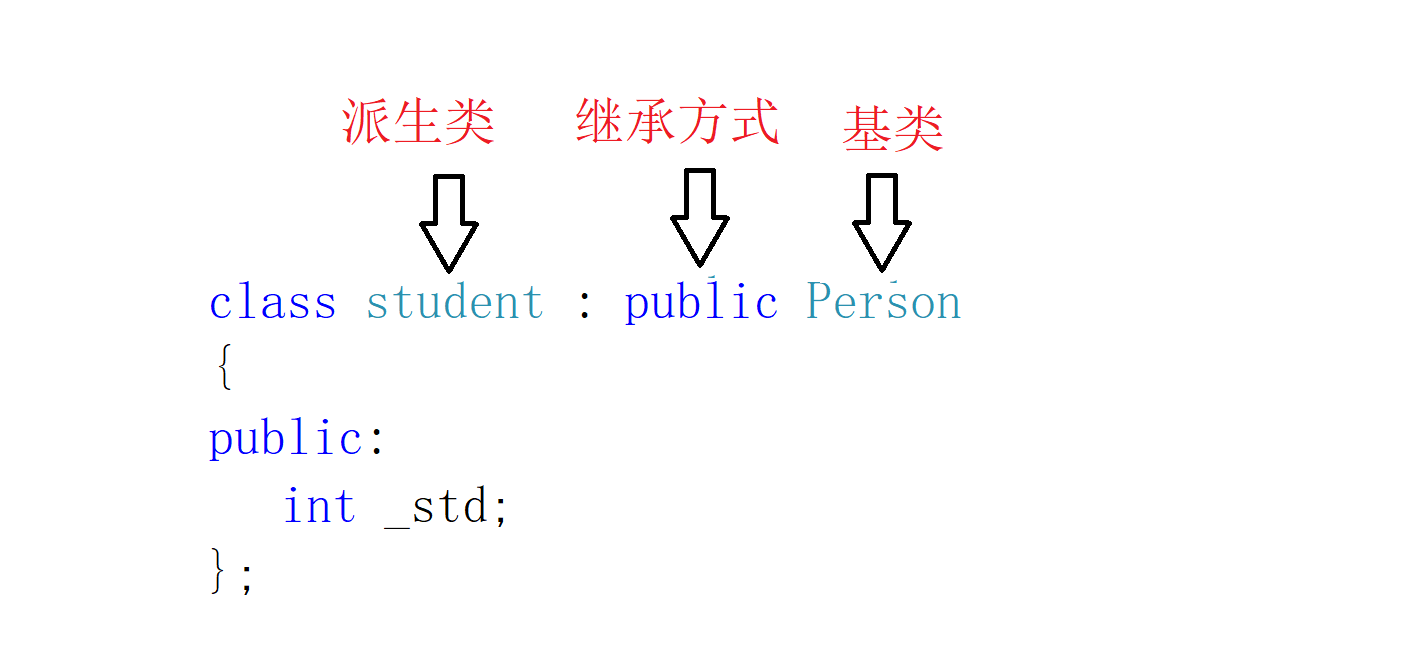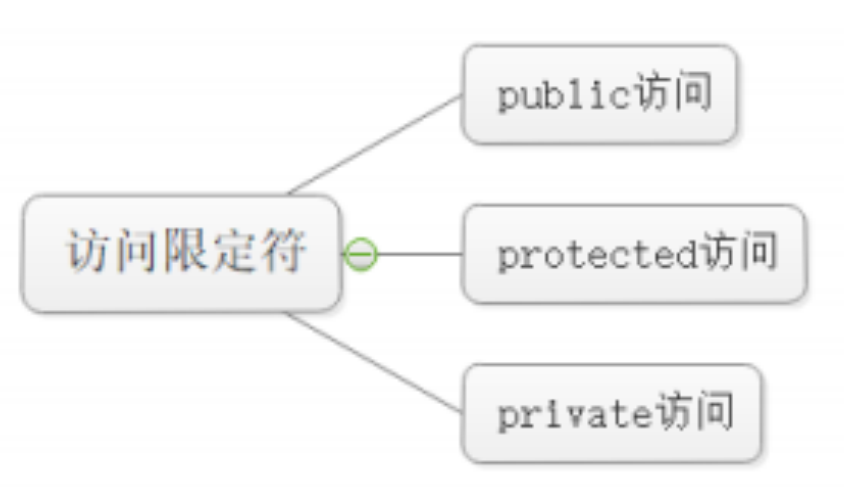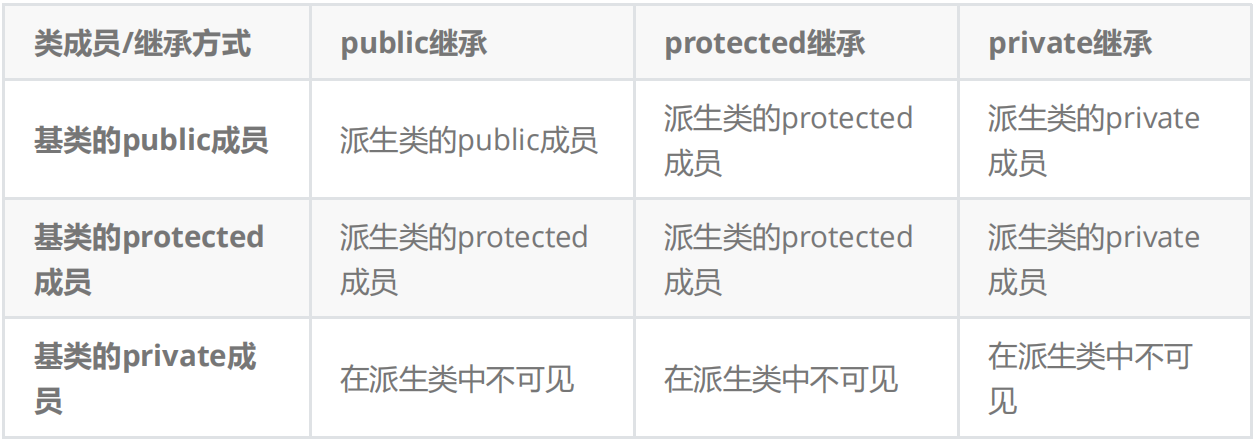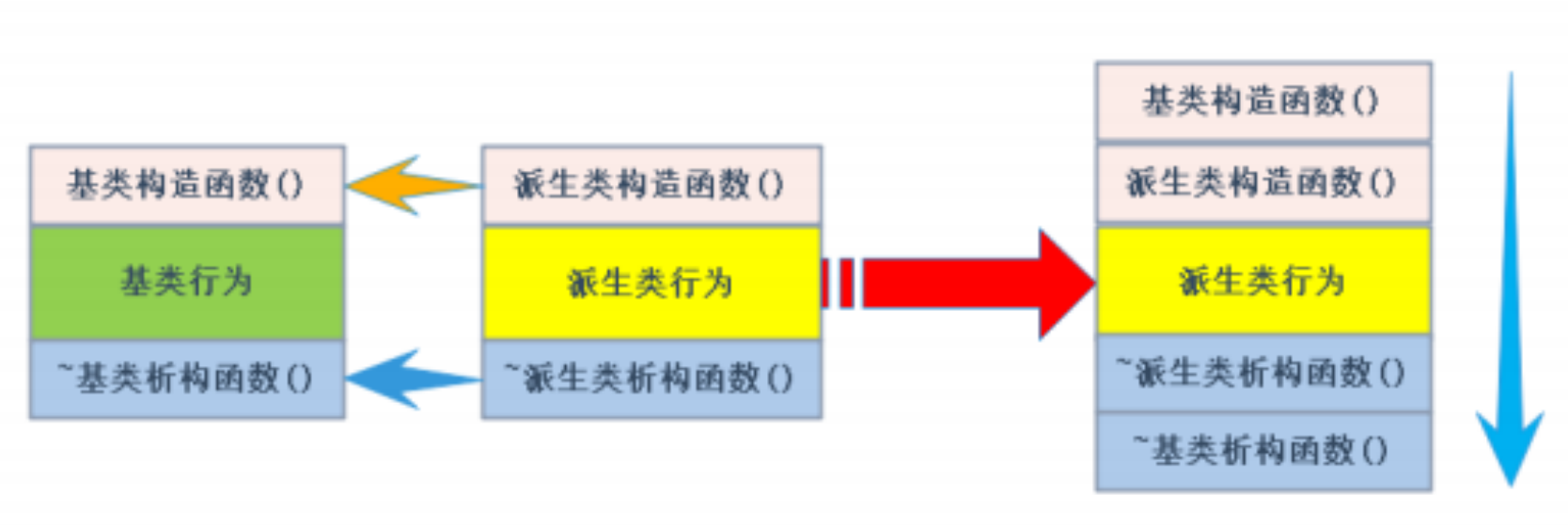C++进阶(一)继承
发布时间:2024年01月05日

文章目录
一、继承的概念及定义
1、继承的概念
继承(inheritance)机制是面向对象程序设计使代码可以复用的最重要的手段,它允许程序员在保持原有类特性的基础上进行扩展,增加功能,这样产生新的类,称派生类。继承呈现了面向对象程序设计的层次结构,体现了由简单到复杂的认知过程。以前我们接触的复用都是函数复用,继承是类设计层次的复用。
class Person
{
public:
void Print()
{
cout << "name:" << _name << endl;
cout << "age:" << _age << endl;
}
protected:
string _name = "peter"; // 姓名
int _age = 18; // 年龄
};
// 继承后父类的Person的成员(成员函数+成员变量)都会变成子类的一部分。这里体现出了
//Student和Teacher复用了Person的成员。下面我们使用监视窗口查看Student和Teacher对象,可以看到变量的复用。调用Print可以看到成员函数的复用。
class Student : public Person
{
protected:
int _stuid; // 学号
};
class Teacher : public Person
{
protected:
int _jobid; // 工号
};
int main()
{
Student s;
Teacher t;
s.Print();
t.Print();
return 0;
}
2、继承定义
1、定义格式

2、继承关系和访问限定符


3、继承基类成员访问方式的变化

总结:
- 基类private成员在派生类中无论以什么方式继承都是不可见的。这里的不可见是指基类的私有成员还是被继承到了派生类对象中,但是语法上限制派生类对象不管在类里面还类外面都不能去访问它。
- 基类private成员在派生类中是不能被访问,如果基类成员不想在类外直接被访问,但需要在派生类中能访问,就定义为protected。可以看出保护成员限定符是因继承才出现的。
- 实际上面的表格我们进行一下总结会发现,基类的私有成员在子类都是不可见。基类的其他成员在子类的访问方式 == Min(成员在基类的访问限定符,继承方式)public > protected > private。
- 使用关键字class时默认的继承方式是private,使用struct时默认的继承方式是public,不过最好显示的写出继承方式。
- 在实际运用中一般使用都是public继承,几乎很少使用protetced/private继承,也不提倡使用protetced/private继承,因为protetced/private继承下来的成员都只能在派生类的类里面使用,实际中扩展维护性不强。
// 实例演示三种继承关系下基类成员的各类型成员访问关系的变化
class Person
{
public :
void Print ()
{
cout<<_name <<endl;
}
protected :
string _name ; // 姓名
private :
int _age ; // 年龄
};
//class Student : protected Person
//class Student : private Person
class Student : public Person
{
protected :
int _stunum ; // 学号
};
二、基类和派生类对象赋值转换


class Person
{
protected :
string _name; // 姓名
string _sex; // 性别
int _age; // 年龄
};
class Student : public Person
{
public :
int _No ; // 学号
};
void Test ()
{
Student sobj ;
// 1.子类对象可以赋值给父类对象/指针/引用
Person pobj = sobj ;
Person* pp = &sobj;
Person& rp = sobj;
//2.基类对象不能赋值给派生类对象
sobj = pobj;
// 3.基类的指针可以通过强制类型转换赋值给派生类的指针
pp = &sobj
Student* ps1 = (Student*)pp; // 这种情况转换时可以的。
ps1->_No = 10;
pp = &pobj;
Student* ps2 = (Student*)pp; // 这种情况转换时虽然可以,但是会存在越界访问的问
题
ps2->_No = 10;
}
三、继承中的作用域
- 在继承体系中基类和派生类都有独立的作用域。
- 子类和父类中有同名成员,子类成员将屏蔽父类对同名成员的直接访问,这种情况叫隐藏,也叫重定义。(在子类成员函数中,可以使用 基类::基类成员 显示访问)
- 需要注意的是如果是成员函数的隐藏,只需要函数名相同就构成隐藏。
- 注意在实际中在继承体系里面最好不要定义同名的成员。
// Student的_num和Person的_num构成隐藏关系,可以看出这样代码虽然能跑,但是非常容易混淆
class Person
{
protected :
string _name = "小李子"; // 姓名
int _num = 111; // 身份证号
};
class Student : public Person
{
public:
void Print()
{
cout<<" 姓名:"<<_name<< endl;
cout<<" 身份证号:"<<Person::_num<< endl;
cout<<" 学号:"<<_num<<endl;
}
protected:
int _num = 999; // 学号
};
void Test()
{
Student s1;
s1.Print();
};
// B中的fun和A中的fun不是构成重载,因为不是在同一作用域
// B中的fun和A中的fun构成隐藏,成员函数满足函数名相同就构成隐藏。
class A
{
public:
void fun()
{
cout << "func()" << endl;
}
};
class B : public A
{
public:
void fun(int i)
{
A::fun();
cout << "func(int i)->" <<i<<endl;
}
};
void Test()
{
B b;
b.fun(10);
};
四、派生类的默认成员函数
6个默认成员函数,“默认”的意思就是指我们不写,编译器会变我们自动生成一个,那么在派生类
中,这几个成员函数是如何生成的呢?
- 派生类的构造函数必须调用基类的构造函数初始化基类的那一部分成员。如果基类没有默认
的构造函数,则必须在派生类构造函数的初始化列表阶段显示调用。 - 派生类的拷贝构造函数必须调用基类的拷贝构造完成基类的拷贝初始化。
- 派生类的operator=必须要调用基类的operator=完成基类的复制。
- 派生类的析构函数会在被调用完成后自动调用基类的析构函数清理基类成员。因为这样才能
保证派生类对象先清理派生类成员再清理基类成员的顺序。 - 派生类对象初始化先调用基类构造再调派生类构造。
- 派生类对象析构清理先调用派生类析构再调基类的析构。
- 因为后续一些场景析构函数需要构成重写,重写的条件之一是函数名相同(这个我们后面会讲解)。那么编译器会对析构函数名进行特殊处理,处理成destrutor(),所以父类析构函数不加virtual的情况下,子类析构函数和父类析构函数构成隐藏关系。


class Person
{
public :
Person(const char* name = "peter")
: _name(name )
{
cout<<"Person()" <<endl;
}
Person(const Person& p)
: _name(p._name)
{
cout<<"Person(const Person& p)" <<endl;
}
Person& operator=(const Person& p )
{
cout<<"Person operator=(const Person& p)"<< endl;
if (this != &p)
_name = p ._name;
return *this ;
}
~Person()
{
cout<<"~Person()" <<endl;
}
protected :
string _name ; // 姓名
};
class Student : public Person
{
public :
Student(const char* name, int num)
: Person(name )
, _num(num )
{
cout<<"Student()" <<endl;
}
Student(const Student& s)
: Person(s)
, _num(s ._num)
{
cout<<"Student(const Student& s)" <<endl ;
}
Student& operator = (const Student& s )
{
cout<<"Student& operator= (const Student& s)"<< endl;
if (this != &s)
{
Person::operator =(s);
_num = s ._num;
}
return *this ;
}
~Student()
{
cout<<"~Student()" <<endl;
}
protected :
int _num ; //学号
};
void Test ()
{
Student s1 ("jack", 18);
Student s2 (s1);
Student s3 ("rose", 17);
s1 = s3 ;
}
五、继承与友元
友元关系不能继承,也就是说基类友元不能访问子类私有和保护成员
class Student;
class Person
{
public:
friend void Display(const Person& p, const Student& s);
protected:
string _name; // 姓名
};
class Student : public Person
{
protected:
int _stuNum; // 学号
};
void Display(const Person& p, const Student& s)
{
cout << p._name << endl;
cout << s._stuNum << endl;
}
void main()
{
Person p;
Student s;
Display(p, s);
}
文章来源:https://blog.csdn.net/2301_78995005/article/details/135415369
本文来自互联网用户投稿,该文观点仅代表作者本人,不代表本站立场。本站仅提供信息存储空间服务,不拥有所有权,不承担相关法律责任。 如若内容造成侵权/违法违规/事实不符,请联系我的编程经验分享网邮箱:chenni525@qq.com进行投诉反馈,一经查实,立即删除!
本文来自互联网用户投稿,该文观点仅代表作者本人,不代表本站立场。本站仅提供信息存储空间服务,不拥有所有权,不承担相关法律责任。 如若内容造成侵权/违法违规/事实不符,请联系我的编程经验分享网邮箱:chenni525@qq.com进行投诉反馈,一经查实,立即删除!
最新文章
- Python教程
- 深入理解 MySQL 中的 HAVING 关键字和聚合函数
- Qt之QChar编码(1)
- MyBatis入门基础篇
- 用Python脚本实现FFmpeg批量转换
- 请解释<component :is=“item.icon“ />这句代码含义
- 05-多种认证方式
- 实验算法设计
- 2023年总结:雄关漫道真如铁,而今迈步从头越,今朝得失
- 等价输入干扰EID(三):“LMI镇稳一下”
- 数据库单表查询
- 灾害应对有方!壹基金安全家园项目给瑞金市金都大道社区送培训
- SpringBoot中使用SpringEvent业务解耦神器实现监听发布事件同步异步执行任务
- 解决IDEA上传Git 带有本地编译文件问题
- 【YOLO系列】 YOLOv4之(Hard)NMS、Soft NMS、DIOU NMS(附代码)